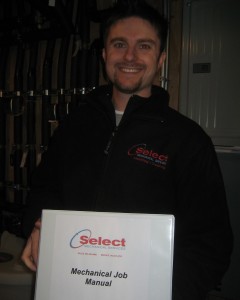 I am now beginning the eighth and final section of the LEED for Homes Reference Manual. Whew – this has been a long process! Here, the USGBC addresses an ongoing theme of my commentary: that while LEED focuses on the design and construction of new homes, “the environmental impact of a home continues throughout its life cycle, well beyond the inital design and construction decisions.” How true that is. If the homeowner does not know about the green features of the home or about how to live sustainability in a home, then the design and construction of the green home can only do so much.
I am now beginning the eighth and final section of the LEED for Homes Reference Manual. Whew – this has been a long process! Here, the USGBC addresses an ongoing theme of my commentary: that while LEED focuses on the design and construction of new homes, “the environmental impact of a home continues throughout its life cycle, well beyond the inital design and construction decisions.” How true that is. If the homeowner does not know about the green features of the home or about how to live sustainability in a home, then the design and construction of the green home can only do so much.
There are two pieces to the Awareness & Education category: education of the homeowner or tenant (for a maximum of two points), and education of the building manager (for one point). The latter assumes a larger dwelling unit was built and does not apply to me, an individual homeowner.
(If you are paying attention to the point accumulation, I am still 2.5 points away from the gold level of certification. So even if I get these two points, I’ll miss it by a half a point! My plan is to go back to the Innovation & Design Process and get a few more points from exemplary performance of our irrigation system.)
The prerequisite for AE 1 – Education of the Homeowner of Tenant is a comprehensive list of what they call “Basic Operations Training.” The home occupant must be provided with the following:
1) An operations and maintenance manual that includes the required LEED certification documents: the completed LEED chekclist, each LEED Accountability Form, the Durability Inspection Checklist;
2) The product manufacturers’ manual for all installed equipment, fixtures, and appliances, as well as general information on efficient use of energy, water, and natural resources;
3) Operations and maintenance guidance for any LEED for Homes-related equipment installed in the home (includes HVAC equipment, radon protection system, irrigation system, etc.);
4) Guidance on occupant activities and choices, including cleaning supplies, water-efficient landscaping and irrigation, impacts of chemical fertilizers and pesticides, lighting and appliance selection;
5) Educational information on “green power”;
6) A minimum one-hour walk-through in which the homeowner is instructed on how to use and maintain all installed equipment.
Personally, I think all homeowners should have this kind of education — whether their home is green, LEED certified, or not — because we certainly do not learn it in school. And our home is usually our largest investment, so it’s important to know how to operate and maintain it. Many of the items above are things I have been educating others on (such as solar energy), so our builder did not need to present an extended manual to me. If the homeowner had been someone other than me, this seems like an extra (but very worthy) burden on the builder.
I absolutely needed a minimum one-hour walk-through, though, to understand how all the systems work. I took notes, and still need reminders. Now, though, I give tours of our mechanical room!
